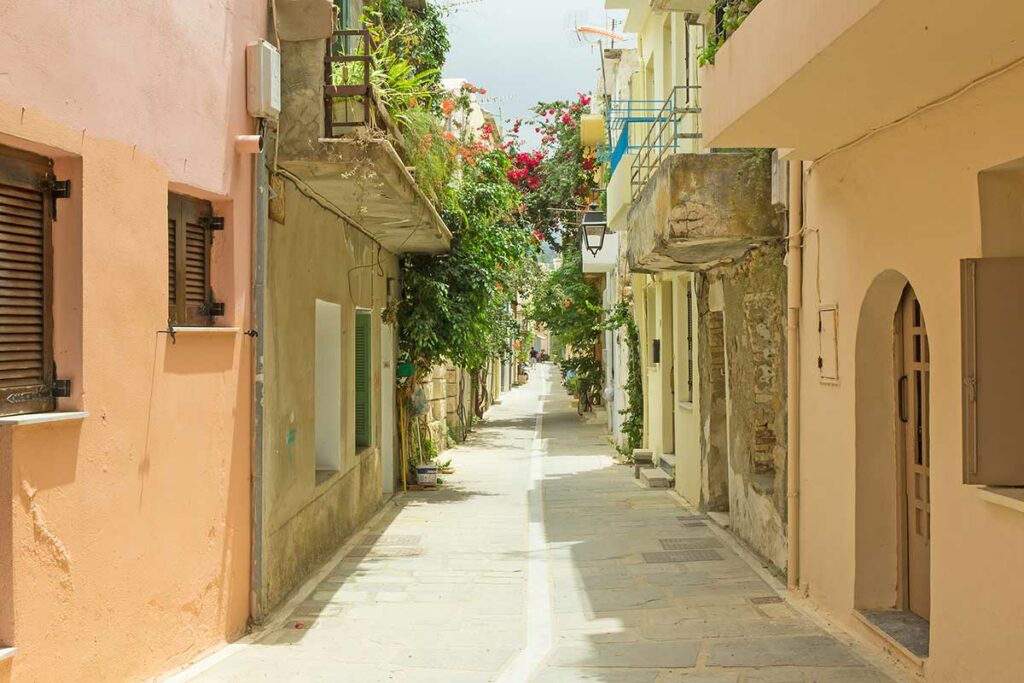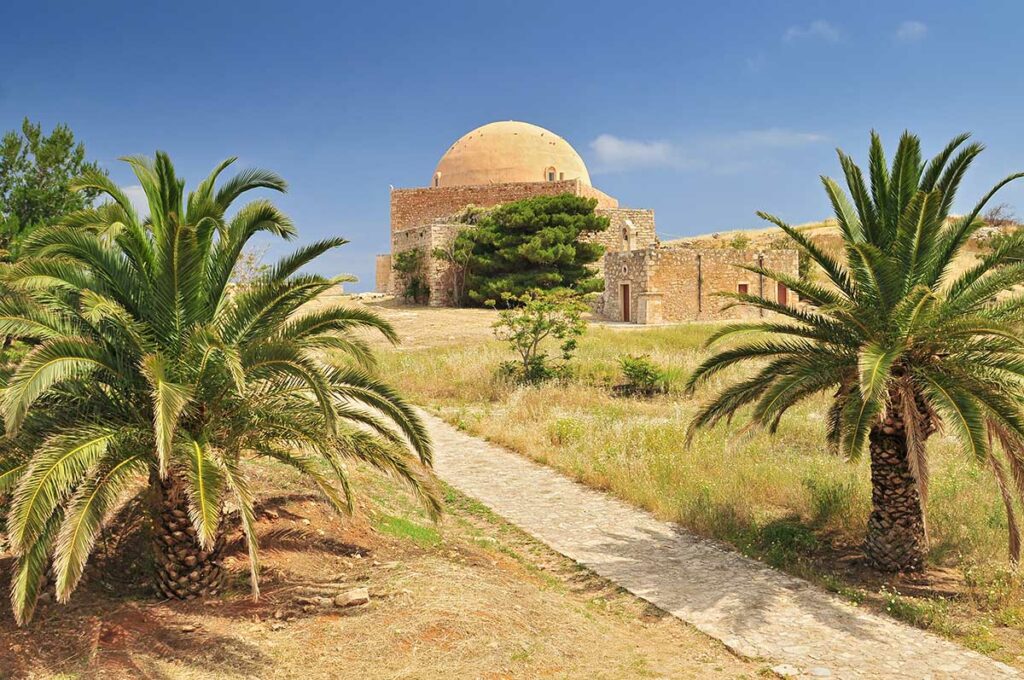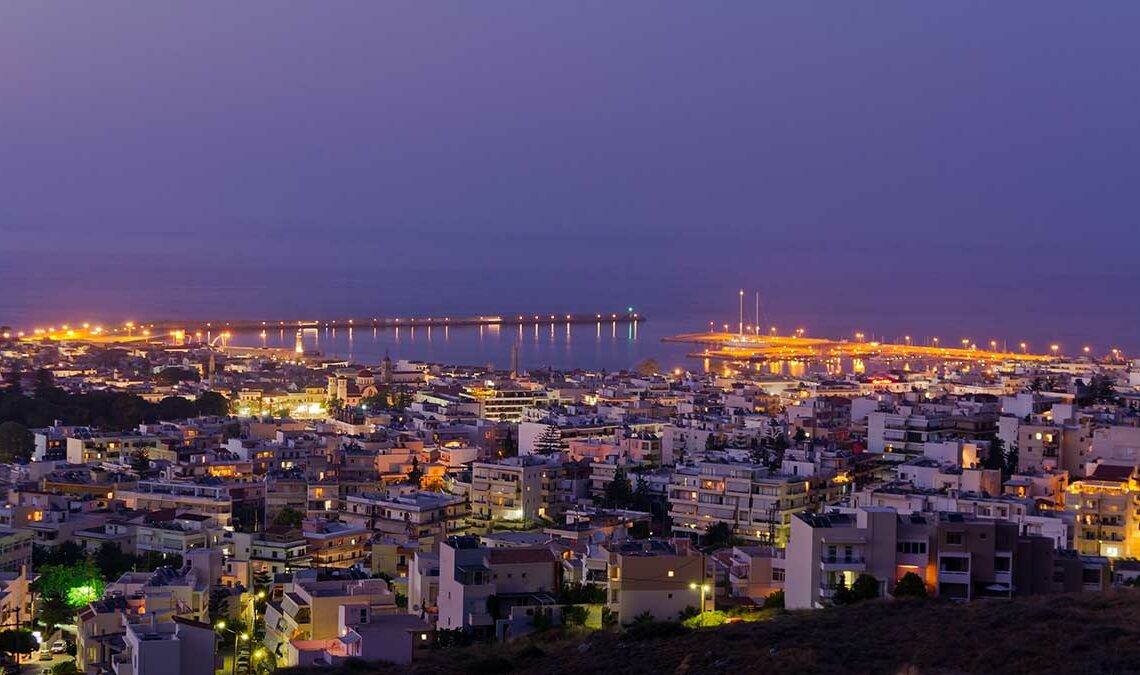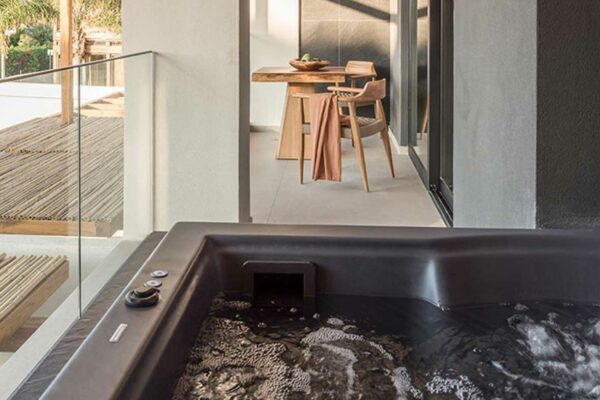Wandering Around the Alleys of the Old Town in Rethymno
A stroll down the alleys of the Old Town in Rethymno is a trip back in time: you will feel like walking around a Rennaissance town, as the area features a multicultural cluster of Cretan, Turkish, and Venetian architecture, all forming a veritable living museum.

The Old Town’s Main Landmarks
You will find some of the most significant historical landmarks in the Old Town neighborhood of Rethymno.
- Old Venetian Harbour: It has a small marina and a 13th-century Venetian mole with a high wall preserved in excellent condition, despite attacks from the sea and adverse weather conditions from time to time.
- Rethymno Lighthouse: At the end of the Venetian mole, you will see a 19th-century lighthouse, built in the 1830s during the Egyptian Occupation of Crete. It is the island’s second largest remaining Egyptian lighthouse, after the Lighthouse of Chania. Alas, the lighthouse in Rethymno no longer operates but remains a significant attraction of the Old Town.

- Fortezza of Rethymno: A Venetian masterpiece from the 16th century, the Fortezza stands on Paleokastro hill, the site of the acropolis of ancient Rhithymna. The original fort was designed by Venetian architect Michele Sanmicheli and completed in 1570. After the citadel fell to the Ottomans led by Uluç Ali Reis in 1571, the Venetians built new fortifications. In its current form, the Fortezza of Rethymno was designed by military engineer Sforza Pallavicini in the trace italienne style (bastion fort); however, with an irregular plan featuring demibastions, gates, an armory, two gunpowder magazines, storage rooms, and cisterns. You can visit the fort and attend various cultural events and exhibitions or admire the spellbinding views of the Cretan Sea from its walls.

- Venetian Loggia: This is an 16th-century architectural monument in the center of the Old Town. It was designed by Veronese engineer Michele Sanmicheli and built between 1538-1540. The upper story was added in 1625, modifying the original plan of the edifice. Today it houses the Antiquities Office of Rethymno and is open to the public.
- Rimondi Fountain: This small classical Venetian fountain dates from 1626, when it was built at the order of the Venetian Rector (commander or governor) of Rethymno, A. Rimandi. It boasts three taps coming out of the mouths of three lion heads. The water flows into three basins flanked by four columns with Corinthian capitals. Still standing in today’s Petichaki Square, the fountain was at the heart of the Old Town at the time of its construction. You will find several tavernas, shops, and other Venetian monuments close to the fountain.

- The Historical and Folklore Museum of Rethymno occupies a Venetian mansion from the 17th century. The permanent collection is spread over five halls dedicated to the region’s traditional handicraft work and folklore art.
- Neratze Mosque (or Gazi Hussein Mosque): The Ottomans modified an existing Venetian building (a church belonging to the Augustinian Priory), turning it into a mosque after 1657 when the Turks occupied the city. The minaret and two balconies were added in 1890. Today, the mosque no longer serves a religious purpose, housing instead the Municipal Odeon of Rethymno.
- Porta Guora (Great Gate): Designed by Michele Sanmicheli and built between 1540-1570, this gate was the main entrance to the city. It was named in honor of Jocopo Guoro, the Rector of Rethymno between 1566-1568.
- Mosque of Kara Musa Pasha: Permanently closed to the public while considered for renovation and repurposing into a museum, this Ottoman structure has an impressive Renaissance facade with elaborate windows, doorways, and balconies. The mosque most likely dates from the period between 1640-1690. Its original minaret was destroyed.
These are some of the main attractions of the Old Town of Rethymno. As you walk down its alleyways (for example, Eth. Antistaseos St., Arkadiou St., Paleologou St., Arabatzoglou St., and Vernardou St.), you will see many other examples of Venetian and Cretan architecture, some modified by the Ottomans, housing shops, cafes, tavernas, and residences. Take your time to observe their details and snap some pictures to immortalize the experience.
You can discover the Old Town on your own, just strolling around the alleys, but if you want to learn more, you can always book a guided tour: many companies offer paid or free tours. Paid tours provide the advantage of including stops along the way to traditional phyllo workshops, bakeries, breweries, etc. So, choose something to suit your budget and your schedule.





